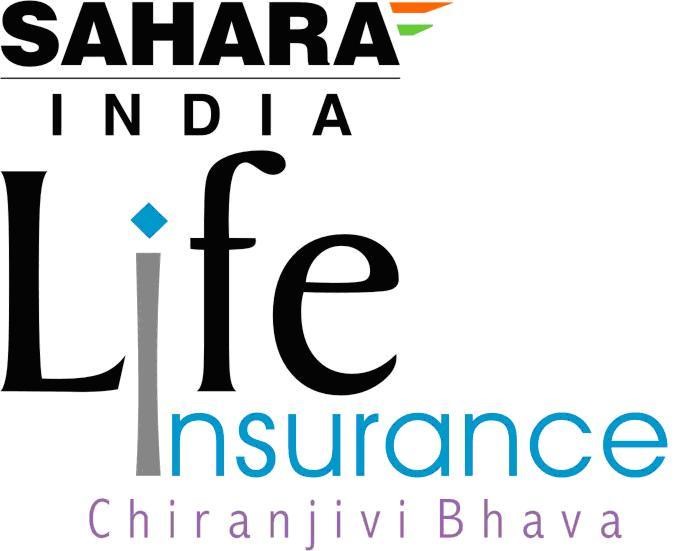What Are Tax Free Bonds & How To Invest In It?
For investors seeking to park their money in fixed-income assets or looking for secure long term flow of income, tax free bonds can be a very attractive option. Income from these bonds are not taxable and the rate of interest can be as high as 8.75%. In addition, these bonds can also help manage portfolio risk through asset diversification.
In India, different such bonds are available for various investment horizons. This article discusses everything an investor must know about tax free government bonds before they purchase these bonds.

What is a tax-free bond?
Tax free bonds are securities that provide fixed income in the form of tax-free coupon payments at a pre-specified rate on invested amounts and return the principal (invested) amount at the time of bond maturity. Coupon payments are nothing but interest payments in the parlance of fixed-income assets. Tax-free interest coupon payments help investors manage their tax liabilities. However, tax-free bonds are completely different from investments, like tax-saving fixed deposits.
Standard tax-free bonds come in maturity duration of 10 to 20 years, and are often backed by the central or state governments. So, the risk profile for tax free government bonds is negligible. However, not all categories of tax-free bonds are risk-free. So, investors need to be careful while buying these bonds.
Who does issue tax free bonds?
Tax-free bonds are primarily issued to raise funds for massive infrastructure development projects with constructive national and regional implications. Financing such projects requires a tremendous amount of capital with a long-term to very long-term investment horizon.
Common examples of such projects are building highways, power generation plants, cross-country electricity transmission lines, airports, ports, etc. Municipalities also offer tax-free bonds to finance specific urban development projects.
To make investing in such bonds attractive and raising capital affordable for issuers, the Central Government of India or a state government often makes earnings from such bonds tax free u/s 10(15) of Income Tax Act, 1961.
Some of the common tax-free bond issuers in India are:
- National Highways Authority of India
- Power Finance Corporation Ltd
- Indian Infrastructure Finance Company Ltd
- Housing and Urban Development Corporation Ltd
- Indian Renewable Energy Development Agency Ltd
- Rural Electrification Corporation Ltd
- National Housing Bank
- National Thermal Power Corporation (NTPC Ltd)
What are the types of tax-free bonds?
In India, tax-free bonds can be categorised into the following categories depending on the issuing authorities:
- Infrastructure bonds for financing highways, ports, highways and expressways.
- Housing bonds for financing large urban development and affordable housing development projects.
- Power bonds for building new power generation plants or expanding capacities, transmission and distribution lines, etc.
- Railway bonds for modernisation of railway infrastructures, like electrification of existing railway lines, laying new railway lines, etc.
- PSU bonds are issued by specific public sector undertakings to finance their regular or project-specific capital expenditure.
- Municipal bonds are issued by self-governing urban local bodies or ULBs for specific local development projects.
How does a tax-free bond work?
Tax-free bonds are now issued only in dematerialised formats. It makes owning, tracking and transferring these bonds easier. Demat bonds have also popularised the buying and selling of these bonds in secondary markets. So, an investor willing to buy such bonds needs to have a Demat account.
- You can invest in tax-free bonds by purchasing directly from the issuers or buying them in the secondary market.
- Once bought, the issuer or the seller (in the secondary market for such bonds) transfers the bonds to the buyer's demat account.
- A Demat account contains the bank account details of its owner. The issuer of the bond pays out the interest amount at a pre-specified coupon rate and time interval to the respective bank accounts.
- At the time of maturity, the issuer transfers the principal amount invested in the bond to its owner's bank account (as mentioned in the demat account).
- The issuers also convey necessary investor-specific information to the contact addresses mentioned in a demat account containing the bonds.
Difference between tax-free bonds and tax-saving FDs
Retail investors often mistake tax-free bonds with tax-saving fixed deposits as both have tax implications. However, they are completely different in several aspects. Let us understand these differences.
|
Tax-free bonds |
Tax-savings FDs |
|
Long term investment tenure of 10 to 20 years. |
Investment tenure is short term; for 5 years. |
|
Interest income received as coupon payments is tax free u/s 10(15) of Income Tax Act, 1961. |
Investments are deductible from taxable income as per the rule u/s 80C of Income Tax Act. |
|
Capital gains are taxable depending on the holding period of bonds by an investor. |
There is no question capital gains with tax-saving FDs as investors cannot sell them in secondary markets. |
|
Fixed maturity period. |
Mandatory minimum investment tenure of 5 years for availing the tax benefit; may not have a maximum limit on maturity period. |
|
Can be bought and sold in secondary markets for fixed income securities. |
Illiquid during the minimum investment tenure; highly liquid beyond that. |
|
Negligible to zero risk of default. |
Mostly secure. |
|
Interest rates (coupon rate) are lower than other bonds without tax benefits. |
Interest rates are lower than other fixed deposits. |
|
Issued by PSUs, Govt-backed agencies and urban local bodies. |
Issued by scheduled commercial banks. |
Benefits of investing in tax free Bonds
As a fixed-income asset class, tax-free bonds can offer distinct benefits to different types of investors.
1. Risk-free or secure investment
Tax-free government bonds are very secure fixed-income assets with zero to negligible risk related to loss of investments.
2. Long-term stable income flow
Tax-free bonds earn interest payments at a fixed annually payable coupon rate throughout the tenure. Such recurring payments at fixed rates can act as a stable income flow over a long period for investors.
3. High tax benefits
For high-networth taxpayers, secure tax free government bonds offer extremely attractive tax benefits as coupon payments are not taxable. It helps generate significant wealth. Income from any other sources for such taxpayers is taxable at the highest income tax rate.
4. Attractive coupon rates
Depending on the tenure, tax-free bonds are currently offering coupon rates from 5.5% to 7.5%. After consideration of the tax benefits and the security of investments, such a rate of interest can be very enticing for individual and corporate investors.
5. Liquidity through secondary markets
Tax-free bonds are issued in demat format, which makes ownership transfer easier. Many of such bonds are also listed on secondary markets for buying and selling. It improves liquidity. However, in the absence of such a secondary market mechanism, tax-free bonds can be less liquid as an asset class.
List of tax-free bonds in 2025
Many government-backed agencies and PSUs offer fresh tax-free bonds from time to time. Some of the tax free bonds available on secondary markets at this moment (as of January 2025) are:
|
Issuing authority |
Rating |
Coupon rate |
Coupon payment frequency |
Maturity |
|
National Highways Authority Of India |
CARE AAA |
7.39% |
Yearly |
Jan 2026 |
|
Power Finance Corporation |
ICRA AAA |
8.3% |
Yearly |
Feb 2027 |
|
Rural Electrification Corporation |
CARE AAA |
8.12% |
Yearly |
Mar 2027 |
|
Rural Electrification Corporation |
CARE AAA |
8.71% |
Yearly |
Sep 2028 |
|
IIFCL |
BWR AAA |
8.55% |
Yearly |
Mar 2029 |
|
NHAI |
CARE AAA |
7.14% |
Yearly |
Jan 2026 |
|
HUDCO |
CARE AAA |
7.27% |
Yearly |
Feb 2026 |
How to invest in tax free bonds?
Investing in tax free bonds is very easy for any individual or corporate investors. You just need to follow a few steps.
- Step 1: Open a demat account through a bank or a stockbroker.
- Step 2: Check with your broker or search online for any public offer of fresh tax-free bonds. Check details about the issuer, interest rate, tenure, and credit rating of the bond, etc.
- Step 3: To subscribe to the public offer of fresh bonds (primary market), apply online through a broker of fixed-income securities. You can directly apply to the issuer making necessary payments. The issuers verify the application and allot the bond based on subscription volume and availability of bonds. Once allotted and fully paid by an investor for the allotted bonds, the issuer transfers the bonds to the respective investor’s demat account.
- Step 4: If no fresh offer is available, an investor can buy tax-free bonds listed on secondary markets (trading exchanges). An investor needs to have a trading account with a broker for purchasing the bonds. Once purchased and fully paid, the trading exchange transfers the bonds to the investor’s demat account.
- Step 5: Once allotted, it is essential for an investor to keep track of the bonds at regular intervals by checking the demat account. Also the investor must keep track of coupon payments in the bank account.
Things to consider before investing in tax-free bonds
Government-backed tax free bonds are secure fixed-income assets with zero to negligible risk to the investment made. Despite this, an investor must consider a few things before making the purchase decision to avoid unnecessary hassles.
- Investment objectives - Fixed income assets are suitable for specific types of investment objectives, like generating a steady flow of income, security, or portfolio diversification. It is advisable to avoid tax free bonds if they are suitable for the purpose of investment.
- Investment holding period - Standard tenures of tax-free bonds are 10 to 20 years. Selling in secondary markets may not be easy because of lack of liquidity (availability of buyers). So, an investor with a strictly short-term investment horizon may need to hold the bonds until maturity. It can cause financial problems.
- Brokerage cost - High brokerage costs of buying or selling may reduce the actual rate of return on the investment.
- Portfolio risk management - Unlike treasury bonds or government securities, tax-free bonds are not completely risk-free. So, investors must avoid miscalculating the portfolio risk.
Conclusion
Tax-free bonds are a very attractive investment option from the perspectives of tax-free income, security of investment and long-term steady flow of earnings. Retail investors, high-networth individuals, and senior citizens, looking for secure regular income, as well as companies and institutions, can invest in these bonds. However, before purchasing such bonds, it is essential to understand the rate of return, risk rating of the bond and the maturity timeline, among many other things, carefully. Any misjudgement can cause distress to the investment portfolio.
FAQs
Ques 1. What are the different options to invest in tax free government bonds?
Ans. An investor can purchase tax free bonds in the primary market during its initial public offer or in the secondary market, if the bond is traded in the exchange.
Ques 2. What types of investors are suitable for investing in tax-free bonds?
Ans. Though tax-free bonds are popular among high-networth individuals (HNI) and institutional investors, any one of the following group of investors can purchase these bonds:
- Retail investors
- HNI investors
- Companies
- Qualified institutional investors (QIB)
Ques 3. How can I redeem my tax free bond?
Ans. Tax free bonds offer no option of early redemption before the maturity date. However, investors can sell them in the secondary market if the bonds are traded on exchange. They can also sell by directly transferring the bonds to other investors, but pricing can be tricky in such a case.
Ques 4. Are treasury bonds and tax-free bonds the same?
Ans. No. Treasury bonds and tax-free bonds are different. The Government directly issues treasury bonds, while government-backed agencies, PSUs and municipal bodies issue tax-free bonds.





























